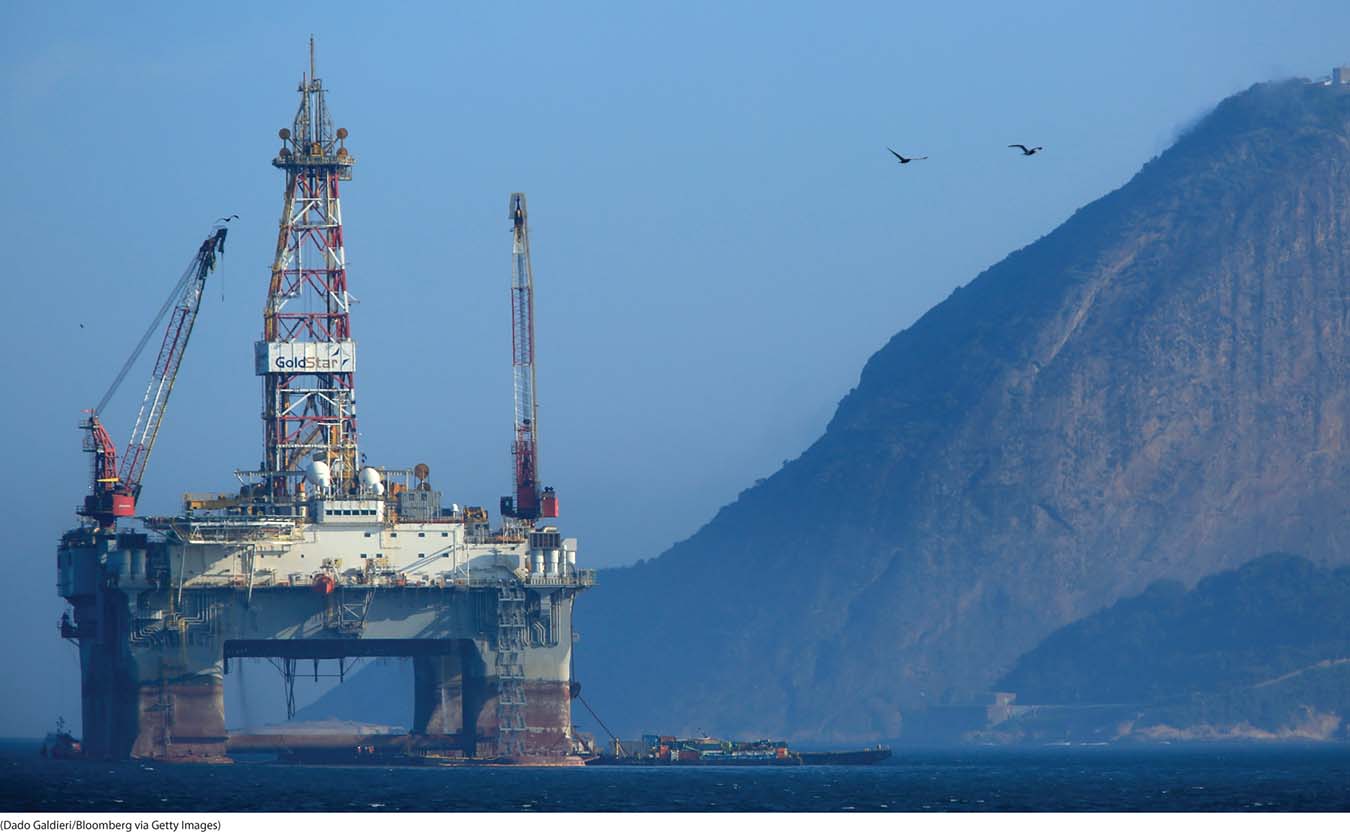Chapter Introduction
CHAPTER 9
Fossil Fuels and Nuclear Energy

Central Question: How can we manage nonrenewable energy resources in a way that reduces environmental harm?
 SCIENCE
SCIENCE
Describe the main fossil fuels utilized by modern society.
 ISSUES
ISSUES
Explain how fossil fuel extraction and nuclear power use can damage the environment.
 SOLUTIONS
SOLUTIONS
Analyze the tactics for mitigating the environmental impacts of consuming fossil fuels and using nuclear power.
Deepwater Horizon Up in Smoke
A devastating oil spill highlights our dangerous dependence on fossil fuels.


On the night of April 20, 2010, a slurry of methane gas, mud, and seawater shot up the drilling apparatus of an oil rig in the Gulf of Mexico and geysered into the air like a shaken bottle of champagne. With a resounding bang, the gas erupted in flames and the rig quaked back and forth violently. The commotion woke 23-
In fact, Choy was one of the lucky ones who escaped to safety on a life boat—
Following the spill, dozens of diseased dolphins washed up on Gulf coast beaches. Seabirds were coated in thick, black tar. And Louisiana’s alligator-
“It is evident that the fortunes of the world’s human population, for better or for worse, are inextricably interrelated with the use that is made of energy resources.”
M. King Hubbert, 1956
nonrenewable energy Sources of energy, including coal, petroleum, natural gas, and nuclear fuels, that are not renewable on timescales meaningful to human lifetimes and that can be depleted with continued use.
renewable energy Sources of energy, including solar, wind, hydrologic, geothermal, and biomass, that can be replenished in a relatively short period of time. Use does not deplete renewable energy sources.
It’s been 150 years since the drilling of the world’s first commercial oil well—
The U.S. Energy Information Agency predicts that energy demand will increase approximately 50% over the next 30 years. This rising energy demand, coupled with the rapid pace at which we are depleting nonrenewable energy sources and the extent to which their use impacts the environment, brings us to the central question of this chapter.
Central Question
How can we manage nonrenewable energy resources in a way that reduces environmental harm?